Home » Hunting Dogs » Pudelpointer – Dog Breed Form, Function, History, and More
Pudelpointer – Dog Breed Form, Function, History, and More
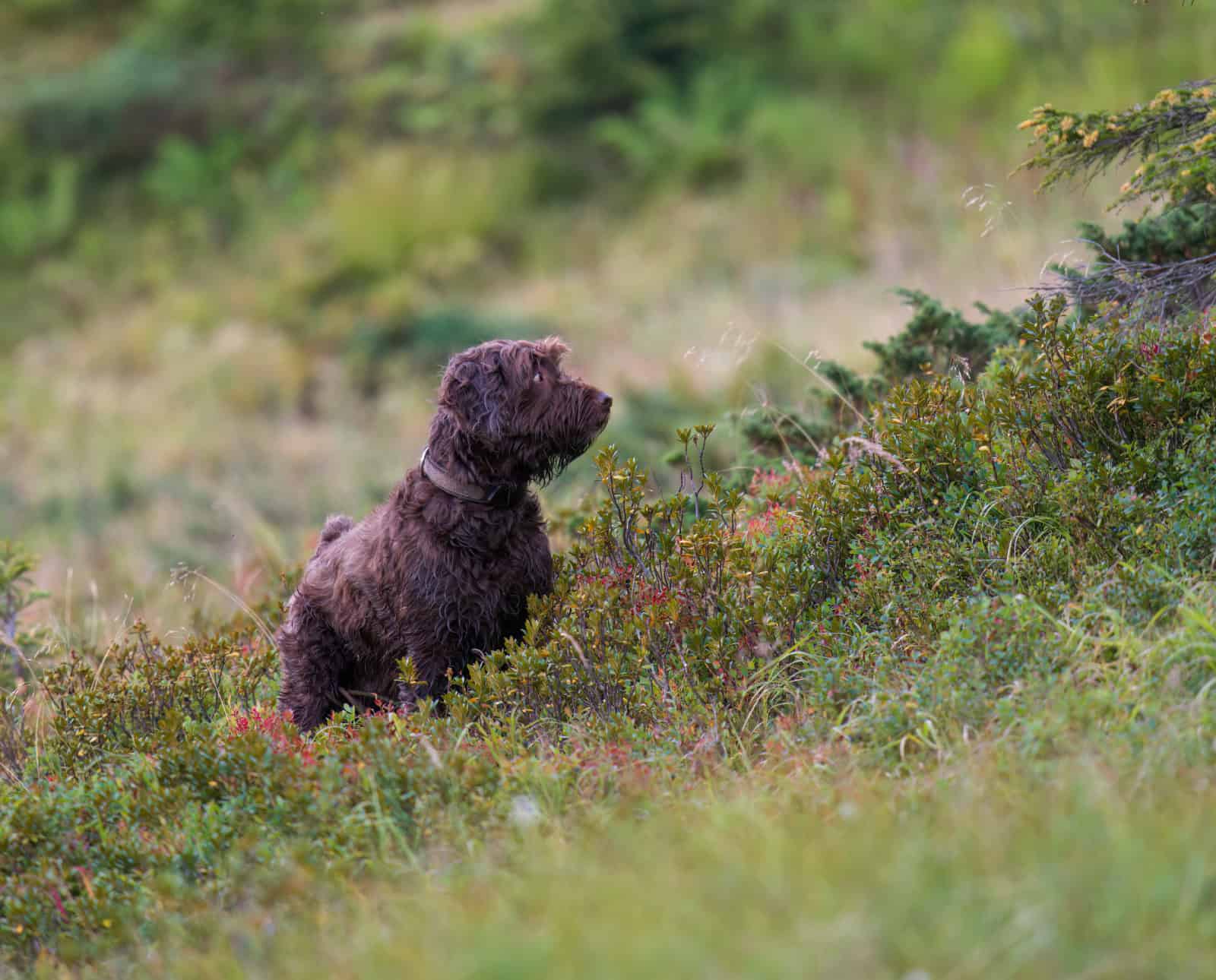
From their home base in Winnipeg, Craig Koshyk and Lisa…
This medium-sized versatile dog breed is known to be friendly, inquisitive, and very social.
Until the mid-1800s, no one set out to create a rough-haired breed from scratch by systematically crossing dogs with different coat types. But the idea of deliberate crosses had been around since at least 1825 when Freiherr (Baron) v. d. Borch wrote in Yearbook for Forest Men, Hunters and Friends of Hunting, “It is noteworthy that crossing the pudel and the pointing dog would unite and maintain the excellent drive by the virtues of both types.”
Listen to more articles on Apple | Google | Spotify | Audible
In 1881, German hunters began systematically cross-breeding Pudels and Pointers. The Pudels used in the original crosses differed from the Poodles we have today. The German Pudel was a hunting breed known for its keen love of water, strong retrieving instinct, and sharpness on predators. The Germans eventually created a superb gun dog breed named the Pudelpointer.
A Polish forester by the name of Walter zu Walsdorf is said to have mated a black half-pudel / half-pointer bitch to a brown and white pointer owned by Emperor Frederick III. The resulting litter produced at least one pup that possessed abilities of both the pudel and the pointer and had the kind of rough-haired coat Hegewald advocated for the breed.
Encouraged by the success of the first litter, breeders began to produce more litters by crossing pudels with pointers. However, they soon realized that dogs from the first generation should not be bred among themselves since they tended to produce offspring of either the pudel or the pointer type and not the desired blend. So, a program of “backbreeding” was established. Dogs from the first and second generations of crosses were bred back to pointers. It is said that 87 crosses to pointers were done around this time. No additional crosses to pudels were reported.
The back-breeding program helped stabilize the breed’s look and character and eventually allowed breeders to mate Pudelpointers with other Pudelpointers. A breed register was created in 1892, and in 1897, a full-fledged club, the Verein der Pudelpointer-Züchter—later renamed Verein Pudelpointer—was established.
For over 100 years, the quality of the breed’s performance and conformation has been assured almost exclusively by testing systems. In Germany, the Verein Pudelpointer organizes VJP, HZP, and VGP venues, as well as a special HZP named after an early supporter of the breed, Edgar Heyne. In North America, most pudelpointer breeders use the NAVHDA testing system to prove their breeding stock. They also register their dogs in the NAVHDA registry, although some register with the Field Dog Stud Book. Recently, some breeders have also begun testing with the newly formed Versatile Hunting Dog Federation.
Like all breeds of gun dogs, there is a certain amount of variation in performance from one pudelpointer to the next. However, there is little to no variation in one important aspect: the vast majority of pudelpointers hunt. For me and many other breed fans, the bottom line on Pudelpointers is this: they are the real deal. They are dynamic hunting dogs bred by hunters for hunters.
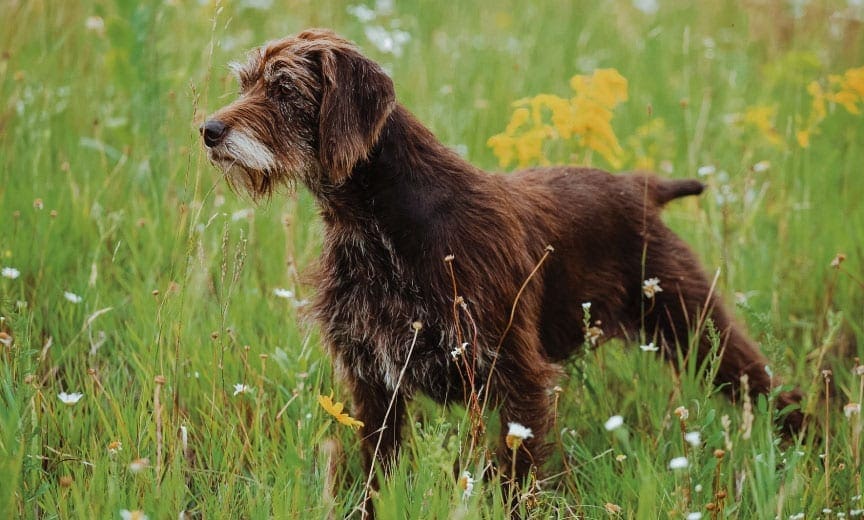
Pudelpointer Characteristics and Form
| Characteristic | Details |
| Name | Pudelpointer |
| Size | Males: 24-27 inches (60-68 cm) and 55-67 poundsFemales: 21.5-25 inches (55-63 cm) and 45-58 pounds |
| Tail | Docked at 2/3rds length |
| Coat | Coarse, hard, flat-lying, wiry topcoat with a beard and eyebrows. However, coat types range from “woolly” to “just right.” |
| Coat Color | Liver brown, “dead leaf,” or black. May have some small white markings. |
| Health Issues | Dysplasia, epilepsy |
| Character | Goofy, clownish, social |
| Population | About 400 puppies are whelped annually between the US, Germany, Czech Republic, Slovakia, Austria, France, and the UK. |
| Range | Medium to wide |
| Pace | Medium fast gallop |
| Good Choice For | Grouse, woodcock, pheasant, snipe, partridge, hare, rabbit, waterfowl, big game |
Since the Pudelpointer’s creation, breeders have had to contend with the tricky genetics of its wire-haired coat. An ideal coat is coarse, hard, and flat-lying, with a 4 to 6-cm topcoat and full facial furnishings. However, even in litters from parents with near-perfect coats, it is not unusual to find a variety of coat types ranging from smooth to woolly to “just right.” When I asked Bill Athens—an American Pudelpointer breeder with over 30 years of experience with the breed—about the variations in the coat, he replied:
Pudelpointer coat consistency has been an issue, but we have seen much improvement. I think part of the problem in the past was the very small gene pool. There weren’t many choices in selecting breeding pairs. I credit NAVHDA’s registry and the FDSB for allowing us to develop a larger gene pool and expand our breeder base to supply the growing demand among hunters, especially those in NAVHDA.
I recently had a litter of six pups. One woolly male, one (almost) smooth male, and the rest had very nice coats. It is funny, though; when people come to look at the pups, they almost always like the ones with lots of furnishings because they are the cutest. Usually a pup with substantial furnishings at seven weeks will be woolly.
In the 17 Pudelpointer litters I have bred, I think I have only had about three or four pups that ended up with short coats, and they looked like solid liver shorthairs.
For a hunter seeking a Pudelpointer pup, it is well worth studying the breed’s coat intricacies or consulting someone who can offer advice on which pup to pick.
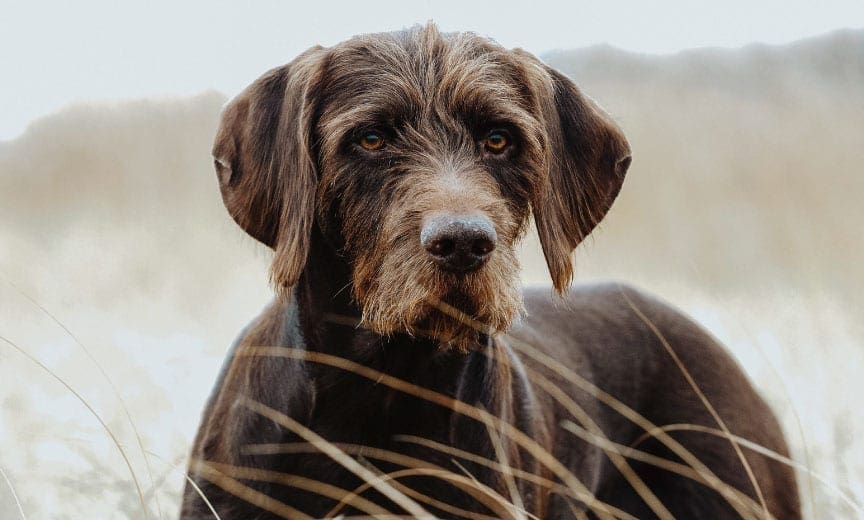
Pudelpointer Personality
Pudelpointers are said to have a highly cooperative attitude and bond closely with their owners. Compared to some of the other wire-haired breeds, they tend to be a bit mellow around the house and have a playful, almost clownish personality.
Pudelpointers are generally level-headed, easy-to-train, and nice-to-be-around gundogs. Bill Athens also finds them very adaptable.
“My experience with the PP in the past 30 years is that they are not one-man dogs,” he said. “You can count on them to be good family dogs, to take to training well, and to be friendly to all people.” Bill finds they bond easily, even when the dogs are acquired as adults. They’re also happy to live in a kennel or the home. “In the field, they are usually pretty serious about their role as a hunting dog,” he concluded.
Jude Gerstein, a breeder in Canada, said, “Pudelpointers are dogs with definite personalities, not machine-like robots. A sense of humor is an asset when owning one. They will sometimes flip you off, but they will also work until they literally drop, just to please their handler.”
Pudelpointer Training and Hunting Ability
Pudelpointers are generally eager-to-please hunting dogs with a lot of desire. Most are fairly easy to train, but some can have a stubborn streak.
“Moderate training methods are usually sufficient, but they can handle some force quite easily,” said Bill. “Any dog needs to be reminded occasionally, but once trained, a Pudelpointer will retain what it has learned with minimal reminders.”
Jude added, “They can also have a stubborn streak—not the stubbornness of a scent hound, but you can see it in their eyes when they decide not to heed you.”
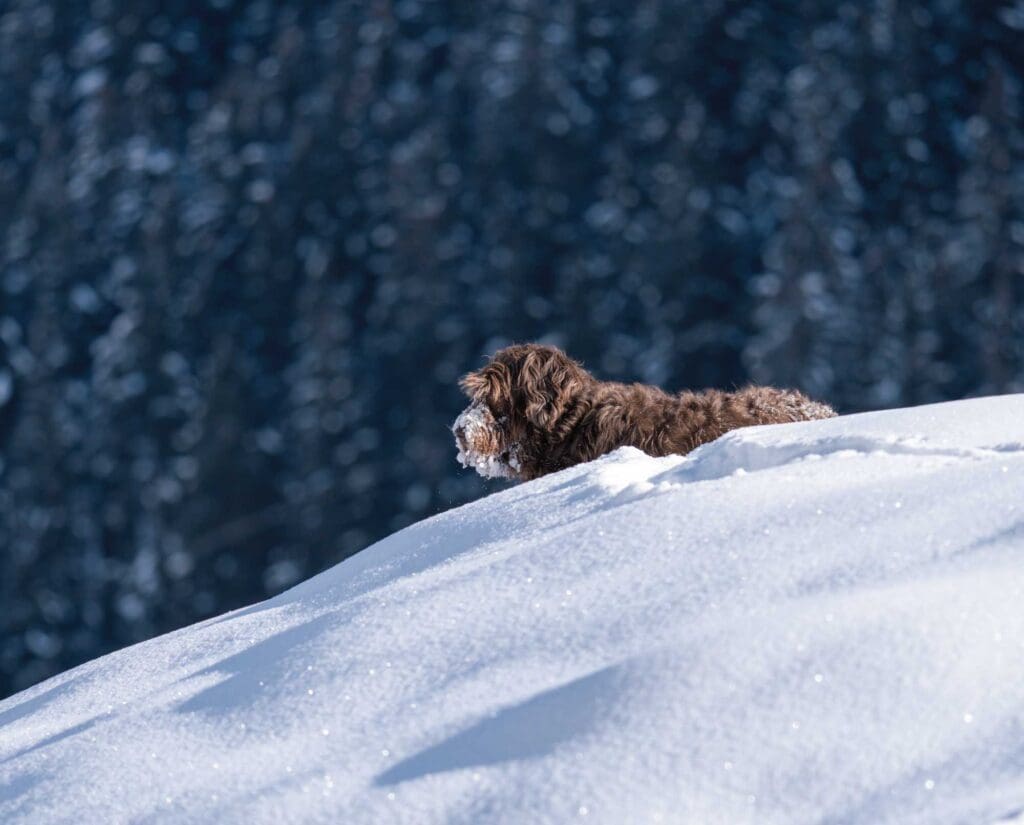
Pudelpointer Field Search
While there may be some differences between Pudelpointers bred in Europe, where a closer-working dog is preferred, and those bred in the US, where there is a preference for faster, bigger-running dogs, Pudelpointers are generally considered to be among the top pointing breeds in terms of speed and range. They are powerful, busy workers that cover a fairly wide area at a medium to fast gallop.
“The Pudelpointer is 85 percent English Pointer and 15 percent Pudel,” Bill Athens said. “Those are the only two breeds in its makeup. Other than American-bred field trial GSPs and Wirehairs, I don’t know of any versatile breed with as much run.”
Pudelpointer Pointing Ability
Most Pudelpointers show a very strong pointing instinct that develops early on. Many are natural backers. Lines bred in the US may show a slightly higher head and tail when pointing. Their European cousins tend to point in a more Continental style: level head, back, and tail.
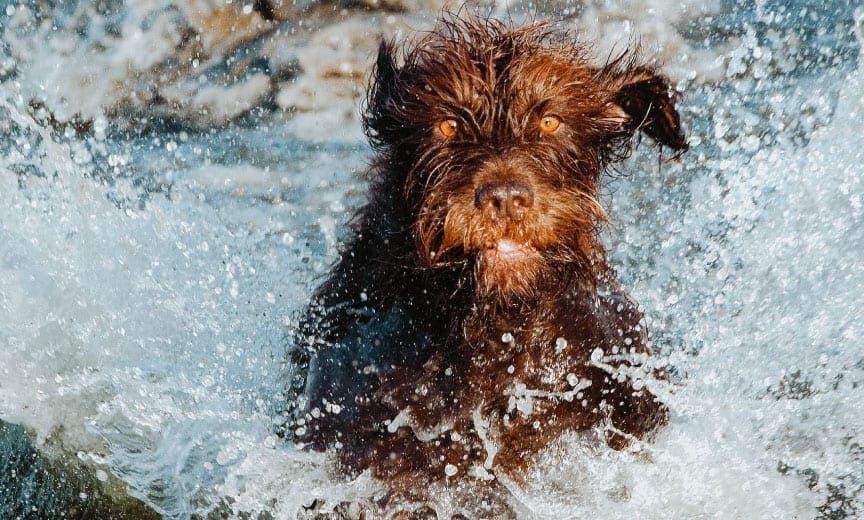
Pudelpointer Retrieve Ability
Pudelpointers have proven their worth as retrievers in the highest-level tests in Germany and North America. A strong, early-developing instinct to retrieve, combined with a good, protective coat, makes the Pudelpointer one of the better choices for waterfowlers. Hard mouth is occasionally seen in the breed, but it is not considered a common fault.
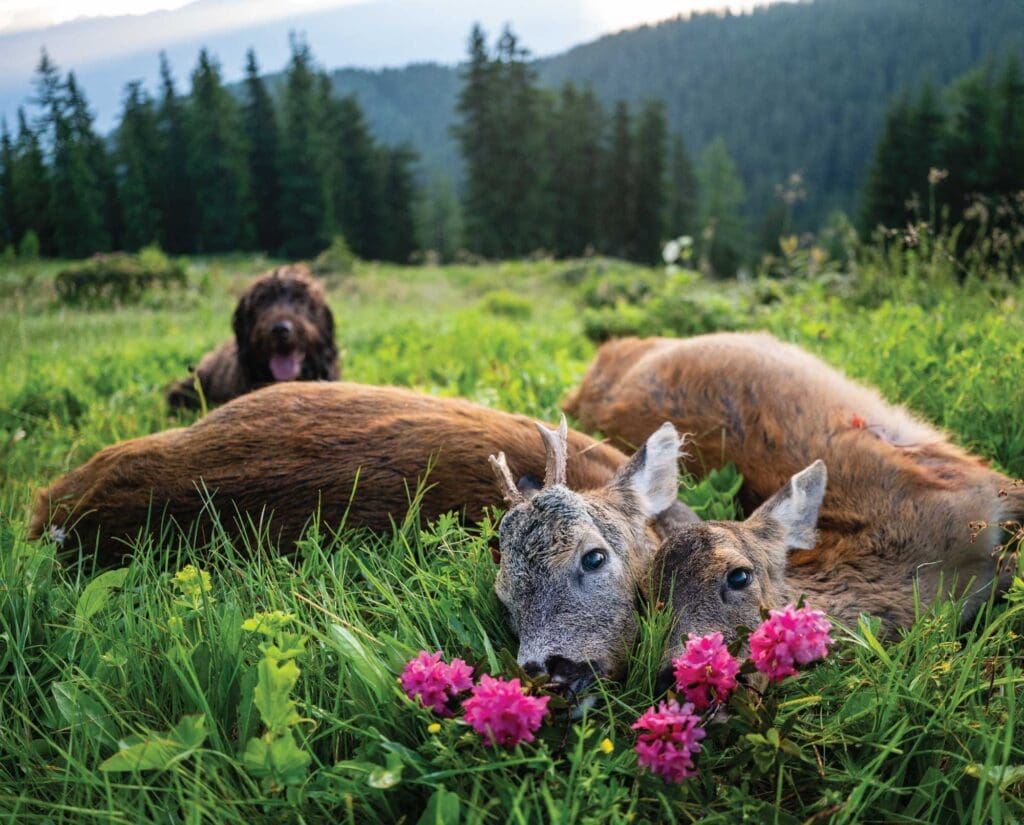
Pudelpointer Tracking Ability
Pudelpointers can make excellent retrievers of large and small game. In Germany, giving voice on trail or on sight is now a requirement for breeding. In North America, the breed’s tracking talents are mainly used to recover wounded game birds, waterfowl, and small game.
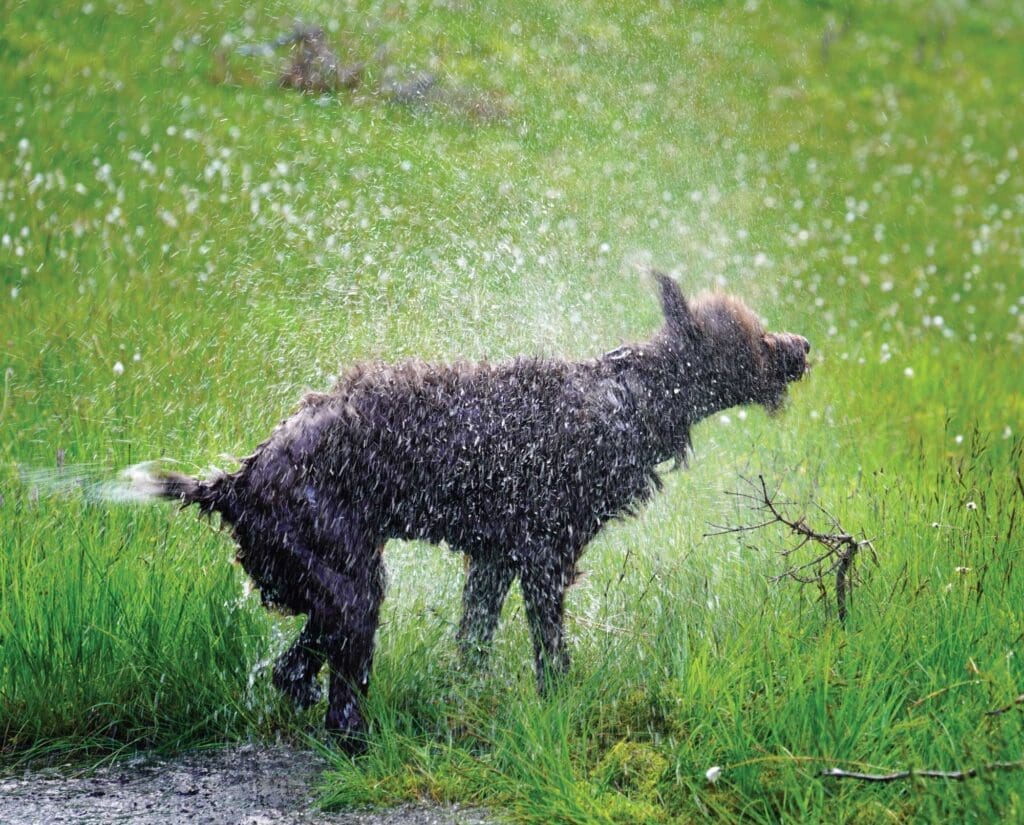
Pudelpointer Water Work
The breed’s founders chose the Pudel for its love of water and its strong will to retrieve. As a result, Pudelpointers have consistently excelled as water dogs and are often owned by dedicated waterfowl hunters who rely on them to fetch ducks and geese in harsh conditions.
Pudelpointers Are Uncommon Yet Amazing Versatile Bird Dogs
Compared to other breeds of pointing dogs, Pudelpointers are not particularly common. Yet my wife Lisa and I have seen many of them over the years in places like Germany, France, Slovakia, the Czech Republic, the U.S., and Canada. We’ve even hunted several of them right here in our home province of Manitoba.
When we travel to photograph dogs or hunt, we tend to meet people who are just as passionate about hunting as we are. Since this versatile breed is and always has been in the hands of hunters, it stands to reason that we would come across more Pudelpointers in a couple of seasons than the average dog walker at a local park would see in a lifetime.
In the 2024 North American Upland Bird Hunting Survey, 5.8% of upland hunters indicated that they owned a Pudelpointer, placing it at No. 8 in popularity within the community, down from No. 7 in 2023.
If the Pudelpointer sounds like a good fit for your family and hunting preferences, you can learn more about them in my book, Pointing Dogs Volume One: The Continentals.
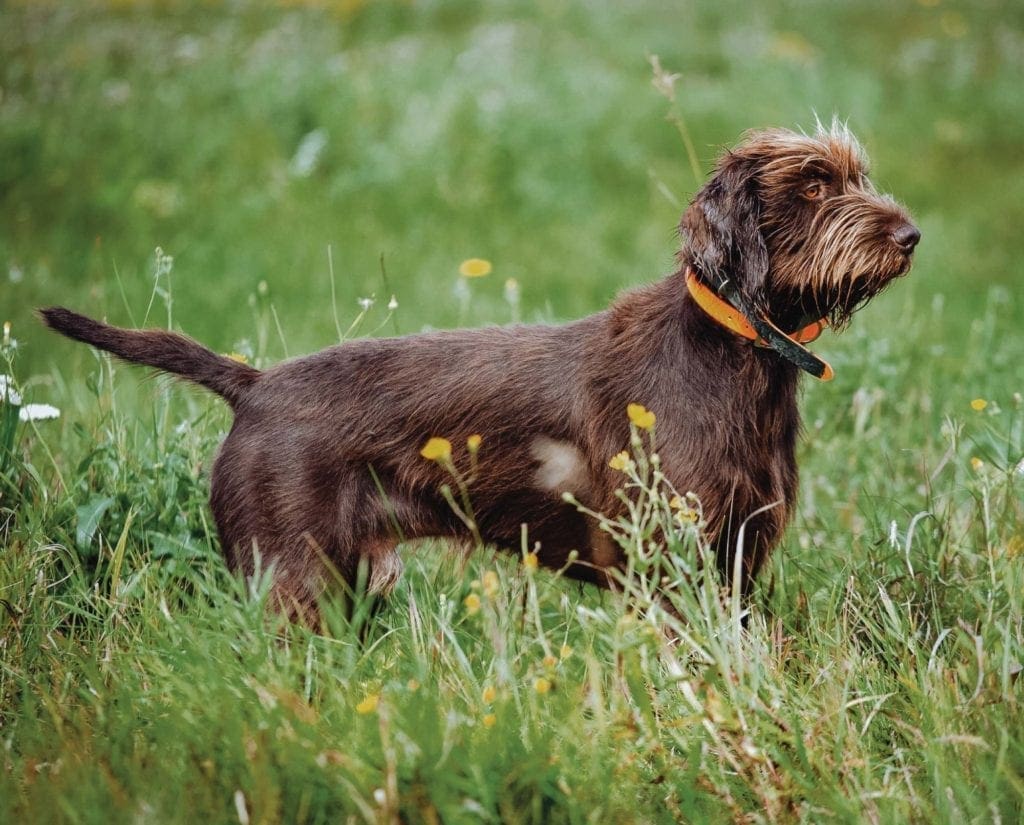
Pudelpointer Clubs
The parent club for the breed in Germany is the Verein Pudelpointer and its Verein Pudelpointer Club Group of North America.
There are also Pudelpointer clubs in Austria and France. In North America, there are three associations for the breed: The Pudelpointer Club of North America (PCNA), The Canadian American Pudel-pointer Association (CAPA), and The North American Pudelpointer Alliance (NAPPA), which is not really a breed club, but an alliance of Pudelpointer breeders who test their dogs in NAVHDA and who agree to maintain certain breeding standards.
From their home base in Winnipeg, Craig Koshyk and Lisa Trottier travel all over hunting everything from snipe, woodcock to grouse, geese and pheasants. In the 1990s they began a quest to research, photograph, and hunt over all of the pointing breeds from continental Europe and published Pointing Dogs, Volume One: The Continentals. The follow-up to the first volume, Pointing Dogs, Volume Two, the British and Irish Breeds, is slated for release in 2020.




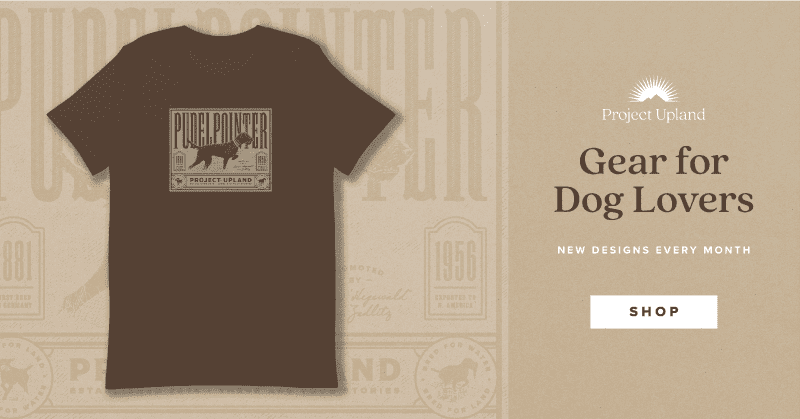

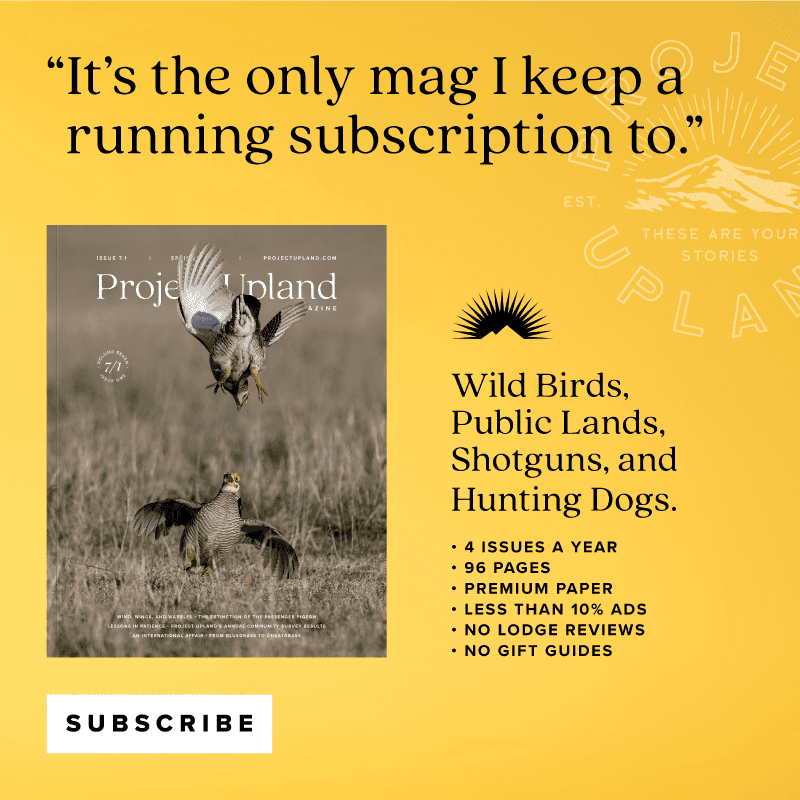
Late to get a Pudelpointer but am certainly happy with my Dixie. Only dog I’ve ever seen that plunges her head into the water bucket and drinks, not laps!
I can confirm this trait. They also immediately then place their mop of a beard on your knee and expect scratches.
Just saw your reply. What is the blood line of your ‘head-plunging drinker’ PP? Mine is:
Sire – Oxbow’s Big Gun —- Dam – Indian Summer’s Benevolent Lucille welped 10/21/17. She is Indian Summer’s Dixie. Drop me an email — drjtbos@gmail.com
Great article, Craig! Thank you.
Well written informatively. Thank You
Well written article. I am a little biased as I hunt over one. Couldn’t ask for a better hunter and companion in the house.
I just got my second Pudelpointer. They are great dogs.
Great article! We’ve got a nine month PP and I couldn’t agree more with what you’ve said above desire and personality. Our pup loves to be cuddled in the house, but as soon as it’s hunt time he doesn’t want to be touched. Thanks!
People will let the name bother them and they have no idea what they’re missing. At clinics, trials or hunting with others they said, “It’s a what?! ha Ha Ha!”. But at the end of the day I’ve heard people say, “Ok I’ll shut up now.” Others will walk away without saying anything because they know their dog were just outshined by ours. If the Pudelpointer could talk he’d say, “And don’t you forget it either!”
I miss my two dearly. And that was a good article Craig.
I so miss my Jessie, she was also the Real Deal! Tirelessly hunting over land or water, wonderful personality, even would search and find lost items of others when give a sample scent. Like a cell phone of a friend in a freshly cut hayfield!
Great article. I’ve always been a Brittany owner, but am intrigued by this breed.
I made the same jump 6 years ago. My old man was a Brittany breeder when I was a kid. I still love them, but I’m not going back. I hunt a lot of ducks and there’s no comparison in that regard.
Fantastic article! I’m on my 4th pudelpointer, the 1st three came from Bodo Winterhelt. Everything you said about their hunting abilities and temperament are correct. Great dogs to spend a day in the filed with.
I live in Maryland and looking for a breeder in my neck of the woods … if anyone knows of one please pass along my email address
davidmccown@gmail.com
David, check out http://www.pudelpointer.net/. PP breeders are held to a higher standard than most other breeds and the North American Pudelpointer Breeder’s Alliance makes sure these breeders are holding to that standard. That being said, I’ve seen some great dogs from breeders that don’t show up on the alliance – maybe someone else can speak to that. Most breeder’s waiting lists are a year or more out. My suggestion would be to reach out to all the breeders and find one that has a line that matches your hunting style, then get on a waiting list. I wouldn’t focus so much on geographical location (within reason) as you will be limited on availability with this breed. I’m on my first PP (now 13 months old, from Tom Vontz at Indian Summer Kennels) and I flew from Utah to Kansas to get him (he flew home on my lap). It adds a little more to the cost of the dog, but you’ll be with your dog for over a decade and, in my opinion, it’s worth the extra money to get exactly what you’re looking for. Feel free to reach out to me if you have any questions, but be warned: I’m only going to talk about how the PP is a superior hunting dog to all others.
stephencraigdavis@gmail.com
thanks for your excellent suggestions!
You may have to travel – or have the dog travel. Contact the
Website in this section to obtain a dynamite PP. they’re wonderful dogs so don’t fall for a fake!!!
Thank you for a very complete history of these wonderful hunting companions. My first dog was a Pointer who was found at an Iowa duck marsh parking lot. She was without a collar and had either become entangled, lost or dumped because of her extreme range. She was a wonderful house dog but disliked putting her feet in water and was difficult to recall because of her intense search and drive instincts.
My best friend, Vic Connors, was NAVDAs president for five years and arranged an interview with a Canadian breeder to see if I could get one. Vic was a Senior Judge and traveled widely to judge all of the NAVHDA breeds. He had prized Setters, GPS, and German Wirehaired Pointers. He could have gotten a good deal from many breeders, but finally chose and stuck with the PPs. We hunted together and he noticed how quickly mine came around with novice training.
I am anxious to adopt my fifth one in a few days, a seven week old, black male found in Minneapolis.
I have owned two Pudelpointers. The first one was direct from Bodo, probably one his last few breedings. He was a robust, incredible hunter and was with me for 13 years and hundreds of birds. My second one was from a “prominent” western breeder and showed great potential a pup. Within the first year he showed signs of some immune system problems. His belly coat was soft and minimal. Long story short, after 3 years and thousands of dollars, he succumbed to a terrible immune disorder. I was promised a replacement pup, but that never happened. I switched to Drahts and never looked back. Much broader gene pool in the U.S. Be careful and diligent when buying a PP.
Forgot to mention…..great article!
We have had our Pudelpointer for 5 years now. I can say he is the best family/bird dog we have ever had. We had always gone with the Labradors, but the last 4 have died of cancer. they were all registered, so our opinion is that the breed is very interbred. Note: I’m not a vet, just a person who always had labs.
Tukr, is a momma’s boy, but when the guns come out no one but the birds are on his mind.
I believe we will stay with Pudelpointers for the rest of our hunting lives.
I love the articles about this breed in the magazine.
Thank you.
Great article Craig!
As always, you captured the breed in all respects in a well penned article. I’m still basking in delight to the reference of “clownish personality”…so true and yet so admired.
Great dogs they nailed it love my dog